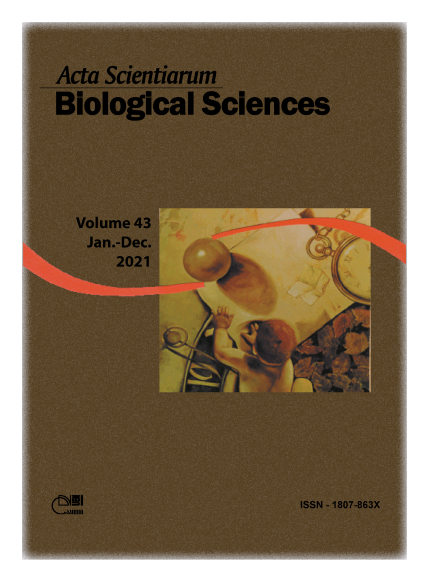Analysis of a dose-response assay in Scaptotrigona bipunctata bees, Lepeletier, 1836 (Hymenoptera: Apidae) using the logistic regression model under the Bayesian approach
Resumo
This paper shows the results of a dose-response study in Scaptotrigona bipunctata bees, Lepeletier, 1836 (Hymenoptera: Apidae) exposed to the insecticide Fastac Duo. The aim was to evaluate the lethal concentration that causes the death of 50% of bees (LC50) and investigate the odd of mortality after exposure to different concentrations, using the logistic regression model under the Bayesian approach. In this approach, it is possible to incorporate a prior information and gives more accurate inferential results. Three independent dose-response experiments were analyzed, dissimilar in their lead time according to guidelines from the Organisation for Economic Co-operation and Development (OECD), in which each assay contained four replicates at the concentration levels investigated, including control. Observing exposure to the agrochemical, it was identified that the higher the concentration, the greater the odd of mortality. Regarding the estimated lethal concentrations for each experiment, the following values were found, 0.03 g a.i. L-1, for 24 hours, 0.04 g a.i. L-1, for 48 hours and 0.06 g a.i. L-1 for 72 hours, showing that in experiments with longer exposure times there was an increase in LC50. Concluding, the study showed an alternative approach to classical methods for dose-response studies in Scaptotrigona bipunctata bees exposed to the insecticide Fastac Duo.
Downloads
DECLARAÇÃO DE ORIGINALIDADE E DIREITOS AUTORAIS
Declaro que o presente artigo é original, não tendo sido submetido à publicação em qualquer outro periódico nacional ou internacional, quer seja em parte ou em sua totalidade.
Os direitos autorais pertencem exclusivamente aos autores. Os direitos de licenciamento utilizados pelo periódico é a licença Creative Commons Attribution 4.0 (CC BY 4.0): são permitidos o compartilhamento (cópia e distribuição do material em qualqer meio ou formato) e adaptação (remix, transformação e criação de material a partir do conteúdo assim licenciado para quaisquer fins, inclusive comerciais.
Recomenda-se a leitura desse link para maiores informações sobre o tema: fornecimento de créditos e referências de forma correta, entre outros detalhes cruciais para uso adequado do material licenciado.












1.png)




3.png)













